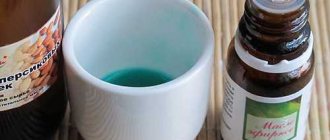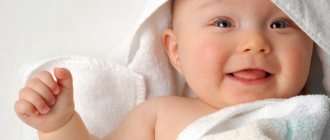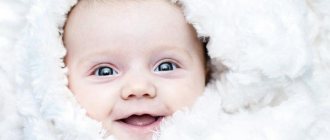A callus is a formation that manifests itself from increased friction or pressure on any area of the skin. Sometimes they are quite painful and cause some discomfort.
On the upper lip, such “abrasions” usually occur in a newborn child who is breastfed or bottle-fed, as well as from using a pacifier. The skin of infants is very delicate, so it is easily affected by constant contact with any irritant. If a formation resembling dropsy appears in children beyond infancy, as well as in adults, this may be a sign of a viral or infectious disease, which requires drug antibacterial treatment.
Causes of calluses on the lip and mouth
A callus is a watery blister containing liquid exudate. If in an infant the common cause is friction from the nipple or on the chest, then a callus on the lip in an adult can be caused by a number of other pathological conditions that are more dangerous to health.
In adults
A callus on the palate, lip, gum or other area of the mouth in an adult is a symptom of the development of a specific disease or a consequence of non-compliance with proper oral care. Another, no less common reason is the habit of biting your lips.
Sources of callus formation on the lip or gum in an adult also include:
- Blowing cold air, for example, when being outside in winter or at other times of the year in windy weather. A characteristic symptom is the appearance of a crust, which peels off on its own over time.
- Exacerbation of herpes infection. In this case, blisters are confused with a callus, which increase in size, itch, and hurt. After opening them, an ulcer forms, which quickly heals, becomes covered with a crust and disappears on its own. Associated symptoms include general malaise, fever, and muscle aches.
- Development of stomatitis. Clinical manifestations occur on the lips, oral mucosa (gum, palate). Pain occurs in the area with the tumor, which intensifies during meals.
The child has
A callus on the lip of a baby is often diagnosed during the lactation period. Just like for a woman, lactation for a baby is a still unknown and new process, which can be accompanied by the appearance of pathological conditions if certain rules are not followed.
A callus may appear on a baby's delicate lips when rubbing against a woman's breast or when sucking on a silicone nipple. A watery blister forms within 1-2 weeks.
In the photo there is a callus on the lip of a newborn (milk):
In any case, you should not ignore such a symptom; it may not be a callus, but a manifestation of another disease.
It is worth considering if the contents of the neoplasm are yellow liquid and there is a red border around it. In this case, the development may occur:
- stomatitis;
- thrush.
In addition to the external sign, the disease is characterized by a number of other manifestations, for example, general malaise, anxiety, and refusal to eat. Thrush is indicated by a white coating in areas with inflammation.
A simple callus in a newborn requires hygiene, the use of disinfectants used to treat all objects with which it comes into contact (for example, pacifiers).
If you suspect a serious illness, you should consult a doctor.
All questions about the appearance and ways to help newborns with a callus on the lip
With the birth of your baby, you acquire a number of new obligations, for example, responsibility for his health. And therefore, when you see a new pimple or swelling on your child’s body, you begin to worry, even when your baby is completely calm. A callus on the upper lip of a newborn may raise a number of related questions in your mind.
How to tell if a bubble of fluid is a callus
You find a bubble filled with liquid on your baby’s upper lip; most likely it’s a callus. During the sucking period, a newborn intensively works with his mouth, and since his skin is still very delicate and not accustomed to work, this is a completely natural process.
If your baby behaves calmly and does not act up every time he tries to feed him, then there really is a callus on his lip. This means you should calm down, because the baby feels your psychological state very strongly. And sometimes it is precisely this that can cause a child to cry.
It is important to know! The appearance of a callus on a newborn's lip can be confirmed by its appearance. It should be whitish in color with clear liquid inside.
All other modifications of the callus that do not fit the description will require closer attention and study from you.
Why might a baby develop a callus?
Breastfeeding is a new and unknown process for you, just as it is for a newborn baby. But, oddly enough, it is he who can provoke the appearance of a number of ailments in both, if certain rules are not followed. Rubbing delicate sponges against the mother's breast or silicone nipple can cause a callus in the baby.
For information on how to properly breastfeed a newborn, read the article: Correctly attaching a baby to the breast>>>
The appearance of a watery blister can be noticed as early as the second week. But you shouldn’t rush and say that a newborn has a callus if you find a bubble on the lip with a yellowish liquid, and there is pronounced redness around it - this is certainly not from sucking. The reasons for its appearance can be caused by the following diseases:
Both illnesses will provoke anxiety in the baby. He may refuse to eat and be capricious. The presence of thrush is also indicated by the presence of white plaque in the baby’s mouth.
You can get rid of it yourself by disinfecting all objects that the newborn comes into contact with and maintaining your own hygiene. A soda solution for wiping the mouth will help you alleviate the baby's condition. Manipulation should be carried out 4 to 8 times a day.
But as for stomatitis, this disease requires examination by a pediatrician and the prescription of complex treatment.
Should we panic?
Remember, in matters of upbringing and health of children, panic is a bad friend and ally. Before you do anything, you should decide whether it is necessary and how much better your actions will make the newborn.
A real milk callus, which so often attracts the attention of parents, does not bring any discomfort to the baby. It may accompany the entire period of breastfeeding or appear periodically.
The main thing to remember:
- Do not open the bladder and release liquid from it, so as not to cause an infection;
- If the callus bursts during the feeding period, it should be treated with hydrogen peroxide; What other medications should be in the First Aid Kit for a newborn?>>>
- To prevent calluses from being a sign of another disease, maintain personal hygiene before each feeding of your child.
How to distinguish a callus in a newborn from herpes
Infection with herpes in a newborn can occur in only two ways - in utero and during labor. In these cases, the presence of pathology cannot be excluded.
It is important to know that herpes on the lip of a newborn can appear in the same way as a callus - on the 14th day of his independent life (Read about what changes happen to a baby in the first days of life: What should a child be able to do at 1 month?>>>. But This infectious disease is accompanied by a number of additional symptoms:
- increased body temperature;
- watery blisters may appear on other parts of the body;
- the child becomes drowsy;
- muscle tone may be reduced;
- development of a convulsive state.
Herpes is very dangerous for a young child. Delayed or incorrect treatment can take the life of your newborn baby. To learn about how to keep your child healthy and protected from infections, watch our course: Healthy Child, workshop for mom>>>
Remember! The baby should not be capricious or show signs of anxiety if he really has a callus.
The health of the newborn certainly requires your close attention, but you should not sound the alarm unnecessarily.
Source: https://uroki4mam.ru/mozol-na-gube-u-novorozhdennogo
How to distinguish a callus from another disease?
If a callus does occur, you can limit yourself to observing hygiene and rules for treating the area. But how do you understand that it is a callus?
A characteristic feature of stomatitis is that plaques do not appear in one place. The entire oral cavity is involved in the lesion. In addition, the emotional background changes: the person (child) becomes irritable and emotional.
A candidal infection is indicated by the appearance of white plaque in the oral cavity, as well as other clinical manifestations:
- small rash;
- decreased appetite;
- increased irritability;
- itching and pain;
- general malaise;
- elevated temperature;
- lymphadenitis (increase in the size of lymph nodes);
- sour breath.
A callus with a herpes infection looks like a cluster of blisters. In one inflammatory focus there are several of them, located next to each other.
Associated symptoms are:
- elevated temperature;
- general malaise;
- muscle hypotonicity;
- convulsive syndrome.
Callus care - how to treat it?
It is impossible to prevent a baby from developing a callus on his lip from sucking on a breast or pacifier. The only thing a mother can do is not to press the breast (or nipple) tightly against the tongue or lip, maintain hygiene, monitor the condition of the breast, preventing the formation of dry cracks and crusts on the nipples, which can injure the delicate skin of the baby’s lips.
While breastfeeding, a callus may appear more than once, but several times, appearing and disappearing from time to time.
More often, a callus forms on the lip of a newborn, but cases when a neoplasm occurs in a child of 1-2 years cannot be excluded. The reason for this is eating hard food and biting lips.
If there is no discomfort, if the child behaves as usual, does not cry, is not irritated, there is no need to worry. In this case, the vesicle must be protected from injury so as not to become infected, causing an inflammatory process and additional health problems.
If you cannot avoid damaging the vesicle, you do not need to go to the hospital right away. It is enough to treat the wound surface with a disinfectant (hydrogen peroxide, Chlorhexidine, Miramistin). The drugs will also help the damage heal faster.
Have you discovered a callus on your newborn's lip? Don't panic!
Parents are different, some tend to treat a newly born child, and then an older baby, with a certain amount of sloppiness and irresponsibility, while others, on the contrary, surround their beloved child with excessive care and guardianship.
It is the second category of mothers and fathers who are most often the first to notice a callus on the lip of a newborn, and as soon as they see this problem, they begin to look for the underlying causes of its appearance, and also invent methods for eliminating the “disease.”
In today’s article you will learn what a “milk callus” is, why it appears in a child and whether you need to do something about it.
Attention! Danger! Or not?
Examining her baby once again after bathing, feeding, or simply during his quiet sleep, the mother may discover that “something” has appeared on his upper lip.
Some will see a watery blister in the very center of the sponge, some will see a small hardened growth, and some will see a dried piece of skin that has already peeled off.
If the baby is not bothered by this phenomenon, the neoplasm does not ooze ichor, is not inflamed or red, there is no need to worry or worry.
A callus on the lip of a newborn is a normal physiological condition that occurs in the vast majority of infants and even has a specific medical name.
"Milk" callus
In reference books on caring for infants, this problem, which is not a problem at all, is designated as a milk callus. This condition can manifest itself in a child from the first days after birth, or maybe even after a few months - it all depends on several associated factors and the characteristics of the baby himself.
A callus on a newborn's lip appears as a result of the intense work that the baby needs to do just to eat. Active and frequent sucking causes the delicate skin to become injured and swell. The callus may even become watery and become a little rougher over time.
Unlike the corns and chafing that adults are used to, which they get when putting on an uncomfortable pair of shoes or after working in the garden without gloves, a “milk” callus does not bring any inconvenience to the baby.
Because of her, he will not eat less, much less give up the breast or bottle.
The problem will go away on its own, at most by the time you stop feeding the baby through a bottle or breast. That is, as long as the child sucks a lot, the callus will be present on the lip constantly or appear periodically.
Suspicious mothers and compassionate grandmothers tend to twist facts and make a problem out of nothing. Often, having identified a callus on the lip of a newborn during breastfeeding, parents and their relatives believe that it arose due to improper breast structure or the baby’s inability to take the nipple.
In fact, if the mother does not experience discomfort during feeding, the baby latch onto the breast well and is able to eat, then there are no problems with feeding.
The only nuance that is worth noting is that with the now popular method of feeding on demand, and not by the hour, the baby is attached to the mother’s “boob” quite often.
If he stays near the nurse for a long time (more than the prescribed 15-20 minutes), then the likelihood that a “milk” callus will appear on his lip increases significantly.
Will a bottle save you from calluses?
This, however, does not mean that it is worth limiting the baby’s sucking; moreover, pediatricians do not recommend weaning the baby or switching to mixed feeding before he is 6 months old. A callus on the lip of a newborn with artificial feeding occurs as often as in those babies who eat mother's milk.
If this problem greatly worries parents or the child experiences certain difficulties while eating, you can try changing the nipple on the bottle. The silicone nozzle is more durable and hygienic, but traditional latex is softer and more delicate to the touch, and many children like the tactile sensations after touching it more.
Are we going to treat?
So, if you and your baby have had to deal with such an unpleasant phenomenon as a callus on the lip of a newborn, first of all, do not panic. If in doubt and if you want not to leave everything to chance, contact your child’s attending physician; after assessing the situation, he will suggest the correct algorithm of action.
In the vast majority of cases, no treatment will be needed, but delicate skin will not be harmed at all by light moisturizing and nutrition; it is best to use natural olive oil, it will soften the callus and prevent a rough and rough crust from forming in its place.
Some doctors recommend cauterizing a callus on a newborn’s lip with an antiseptic (iodine, brilliant green, furatsilin).
Treatment with such means is a controversial and controversial method, because they are quite aggressive in their effects and can cause burns, especially on such a delicate area of the body as the lips.
If a blister has burst, the best treatment for the wound is hydrogen peroxide; it will disinfect and dry the hole without further injuring the skin.
Don't miss the real problem
Do not forget that the oral mucosa is one of the first barriers that various types of viruses and infections have to overcome on their way into the human body. Young children are a special risk group; they put everything in their mouths that comes to hand.
It is not always possible to surround a child with ideal sterility and cleanliness, especially since this should not be done, because sooner or later he will find himself in completely different conditions, and an unprepared immune system will not be able to cope with the siege of pathogenic organisms.
The most common problems that can arise in children of the first year of life directly in the mouth are thrush and stomatitis. The first disease is the formation of a whitish coating on the mucous membranes; in advanced cases, small ulcers can be found underneath it.
Stomatitis has different symptoms: the mouth, and sometimes the lips, become covered with blisters filled with whitish liquid, and redness and swelling of the tissues are visualized around the blisters.
The disease itself is often accompanied by high fever. It is very important not to write off this infection as a normal callus on the lip of a newborn.
Photos of “milk” calluses and stomatitis will help you avoid mistakes, as well as take adequate measures when the baby needs real treatment.
Source: https://FB.ru/article/274998/obnarujili-mozol-na-gube-u-novorojdennogo-ne-vpadayte-v-paniku
Rules for feeding infants - prevention
The main rule for preventing calluses on the lip of a newborn is the correct attachment to the breast, choosing the most natural position for sucking. In addition, this will help improve the outflow of fluid from the gland and prevent lactostasis in a woman.
When the baby is full, he lets go of the breast. There is no need to force the baby to the iron. Some newborns are full within 20 minutes, others within an hour.
Pediatricians do not recommend switching a newborn to mixed feeding. When sucking a bottle and the mother's breast, the grip with the lips differs significantly, which can affect the formation of a callus. In addition, the baby may completely refuse breastfeeding after taking a bottle of formula.
Caring for the mammary glands during lactation is no less important. Daily washing of nipples using soap is recommended. However, you should not overuse the detergent, as it helps remove the protective layer - a special lubricant that softens the nipples and prevents the entry of pathogens.
How to properly attach a baby to the breast so that there are no calluses on the lip and cracked nipples, video:
Why might a newborn baby develop a callus?
There are two types of calluses - dry and wet. In both cases, it occurs as a protective reaction of the body to the influence of external infectious agents. Dry type of callus is a consequence of roughening of the skin. It is formed when the dead cells of the epidermis become dense, protecting it from further destruction.
A wet callus forms when fluid (lymph) collects under damaged skin and forms a bubble to protect the wound. A wet callus promotes rapid restoration of the epidermis, so it does not have to be pierced.
A callus on a baby’s lip, like on other parts of the body, appears from mechanical stress on the skin. Babies have soft and thin skin. A blister can form due to active sucking or improper application. Friction against the surface of the nipple is the root cause of a blister on the lip. In this case, calluses become noticeable in the first weeks of the baby’s life. They disappear after a few days, but after a certain time they appear again. Blistering may not stop until breastfeeding ends.
Formula-fed babies are also not immune to this problem. They develop calluses on both the lower and upper lips. The appearance of blisters in infants on IV is also associated with an active sucking reflex. Active sucking is not a problem, so parents should not worry about it. Pediatricians, on the contrary, convince mothers that such a manifestation indicates a good appetite and proper functioning of the esophagus. In addition, a strong sucking reflex may be associated with a period of increased lactation, when the baby especially needs an increase in milk supply.
When should you see a doctor?
It is recommended to visit a doctor in the following cases:
- if there is a white coating or a yellowish crust on the surface of the neoplasm;
- if pathological rashes are present in other areas of the oral cavity;
- if the general temperature rises;
- if there are symptoms of an inflammatory process - itching, burning, swelling.
Changes in the child’s behavior should also alert you. If a child has become restless, is often capricious, or has trouble sleeping, this clearly indicates the development of a specific disease. The feeding process is also disrupted: he refuses the breast and constantly spits it out of his mouth.
If you have such symptoms, you should contact your pediatrician, who, if necessary, will refer the mother and child to another specialized doctor. The specialist will prescribe appropriate diagnostic measures and, based on their results, effective treatment.
Prevention measures
To ensure that everything is in order with the child’s oral cavity, parents need to ensure that hygiene is maintained. The basic rules of prevention include:
- Sterilization of children's dishes. Parents should boil dishes for 20 minutes and wash them with soda or baby products for babies.
- Disinfection of children's items. Mom needs to disinfect toys and pacifiers that get into the baby’s mouth.
- Breast hygiene. A woman should wash her nipple with water after each feeding and with baby soap 2 times a day.
- Correct application. It is very important for a mother to learn how to properly attach a newborn to the breast. Then the woman will avoid painful sensations during and after feeding. Children on IVs must be bottle-fed at the correct angle.
- Regular visits to the dentist. Parents need to take their child to the dentist from the moment the first tooth appears.
Pediatrician, allergist-immunologist, graduated from Samara State Medical University with a degree in Pediatrics. Read more »










